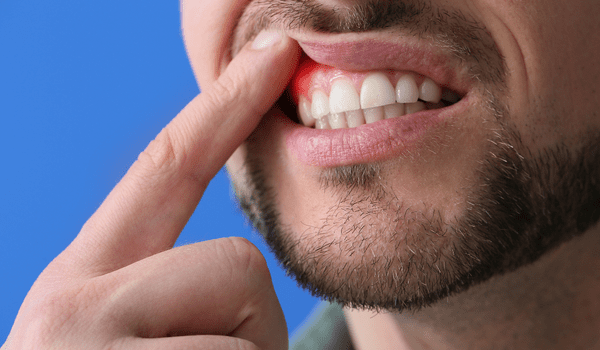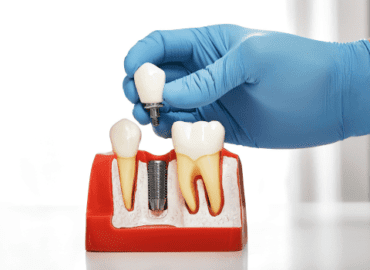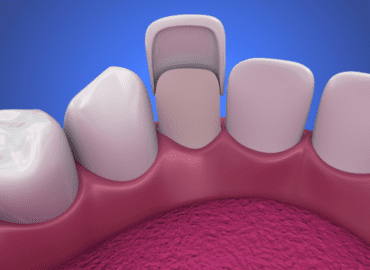There are many periodontal disease causes, but gum disease can be prevented. Before we dive into the different causes of periodontal disease and what you can do to prevent it, let’s learn more about what periodontal disease is, what factors increase your risk of developing it, and periodontal disease symptoms.
What is Periodontal Disease?
Periodontal disease is a serious form of gum disease. Most people are familiar with gingivitis, which is the early stage of periodontal disease. With gingivitis, your gums can become swollen, red, and may bleed. Once gingivitis progresses to periodontitis, the gums begin to pull away from the teeth, bone can be lost, and teeth may become loose or fall out.
The dental specialty that focuses on the prevention, diagnosis, and treatment of the inflammatory disease that destroys the gums is periodontics. These specialists are known as periodontists. Depending on how far your periodontal disease has progressed, your dentist may refer you to a periodontist for specialized care.
What Causes Periodontal Disease?
Periodontal disease is caused by bacteria in the mouth infecting the tissue surrounding your teeth. Plaque begins to form when this bacteria is not removed from the teeth, and eventually leads to tartar. If tartar build-up spreads below the gum line, the periodontal disease process can only be stopped by a dental health professional removing the tartar.
While bacteria is the most acknowledged periodontal disease cause, there are other factors that can increase your chances of developing periodontal disease. Smoking is not only the most significant risk, but it can also make gum disease treatment less successful. Other factors that can increase your risk for periodontal disease include hormonal changes in females, certain illnesses, genetics, stress, crooked teeth, defective fillings, medications that cause dry mouth, and bridges that no longer fit properly.
Signs and Symptoms of Periodontal Disease
Gum disease can be treated, and reversed, when caught early. Contact your dentist if you notice any of the following periodontal disease symptoms:
- Sensitive teeth
- Red or swollen gums
- Tender or bleeding gums
- Chewing has become painful
- Loose teeth
- Your gums appear to be shrinking or teeth appear longer
- Bad breath that won’t go away
- Changes in how your teeth fit together when you bite
How Fast Does Periodontal Disease Progress?
There are four stages of gum disease: gingivitis, mild periodontitis, moderate periodontitis, and advanced periodontitis.
-
Gingivitis
In the earliest stage of gum disease, your gums become red and puffy. They may bleed when you brush or floss, but there is no bone loss. With proper treatment, gingivitis is completely reversible. Symptoms of gingivitis can occur within five days of infection.
-
Mild Periodontitis
Without proper treatment, gingivitis can progress into mild periodontitis within two to three weeks. In this stage, bacteria has moved below your gum line and affected the supporting bone.
You may notice small pockets of space forming around your teeth. These pockets, which look like small black triangles between your teeth, are easy spots for plaque and bacteria to accumulate. While gum disease at this stage is not reversible, regular dental visits can help maintain the condition and prevent tooth loss.
-
Moderate Periodontitis
With moderate periodontitis, your teeth begin to loosen and may even move. Once the infection has set in and you notice a white discharge, you are at risk of losing your teeth. Unlike tooth decay, which typically affects one tooth at a time, periodontal disease often causes you to lose multiple teeth at once.
How you care for your teeth will determine how quickly your periodontal disease symptoms progress. When gingivitis is left untreated, people, on average, develop moderate periodontitis within a year and a half.
-
Advanced Periodontitis
Without treatment, gum disease will lead to advanced periodontal disease. At this stage, periodontal disease causes you to begin to lose teeth and the infection can spread to other areas of your body. Because your immune system is suppressed, it is less likely to be able to fight off infection, leading to other major health risks like heart disease or diabetes.
While it might seem that periodontal disease progresses quickly, there are often enough signs and symptoms that require a visit to the dentist. With routine dental exams, periodontal disease symptoms are often caught early enough to successfully treat gum disease. Which leads us to our number one tip for preventing periodontal disease – annual dental visits.
How to Prevent Periodontal Disease
The most effective way to prevent periodontal disease is to attend your annual dental visits. The American Dental Association recommends visiting your dentist every six months for a cleaning and exam. Not only does this help identify early signs and symptoms of gum disease, but a professional cleaning removes plaque and tartar, which prevents gum disease.
Good oral hygiene at home also helps prevent periodontal disease. Brush with a fluoride toothpaste and floss (whether it’s with a wooden or plastic pick, an interdental brush, traditional floss, or a water flosser) every day to remove bacteria that can cause gum disease. It’s also important to replace your toothbrush every three months to keep it effective.
How to Treat Periodontal Disease
How your dentist treats periodontal disease will be determined on how far your gum disease has progressed. To begin, they will conduct a “deep cleaning,” also known as a Full Mouth Debridement. This is when a special tool is used to scrape the tartar build up from above and below your gum line. Once this is complete, your dentist can more accurately diagnose the level of your gum disease.
Once the deep clean has been completed, your dentist may recommend a scaling and root planing procedure. This is when the hardened plaque is removed from above and below the gum line, all the way to the bottom of the pocket. Then, your dentist will begin root planing and smoothing out the roots of your teeth to help your gums reattach to your teeth. This step may require more than one visit.
Other treatments your dentist may recommend include:
- Antiseptic chip or antibiotic microspheres
- Antibiotic gel
- Enzyme suppressant
- Oral antibiotics
- Referral to a periodontist
If you’re concerned you may be experiencing periodontal disease symptoms or would like to discuss periodontal disease causes that may affect you, schedule an appointment with our expert periodontist Pawel D. Fotek, DMD, MS. Dr. Fotek is an accredited periodontist by the American Board of Periodontology, the highest attainable academic achievement a periodontist can have.
With four offices located across South Florida in West Palm Beach, Boca Raton, and Fort Pierce, our husband and wife dental team, along with our team of dental practitioners and specialists, provide expert dental care at your convenience. Contact us today to schedule an appointment or learn more about our family dental services guaranteed to make you smile.




